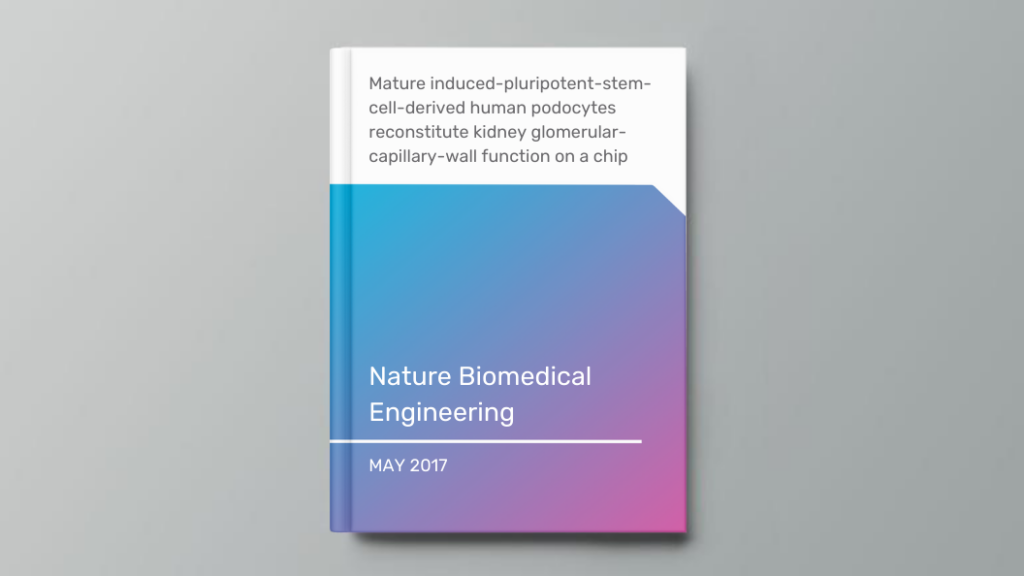Organ Model: Kidney (Glomerulus)
Applications: Model development, ADME, Toxicology
Abstract: An in vitro model of the human kidney glomerulus – the major site of blood filtration – could facilitate drug discovery and illuminate kidney-disease mechanisms. Microfluidic organ-on-a-chip technology has been used to model the human proximal tubule, yet a kidney-glomerulus-on-a-chip has not been possible because of the lack of functional human podocytes – the cells that regulate selective permeability in the glomerulus. Here, we demonstrate an efficient (> 90%) and chemically defined method for directing the differentiation of human induced pluripotent stem (hiPS) cells into podocytes that express markers of the mature phenotype (nephrin+, WT1+, podocin+, Pax2-) and that exhibit primary and secondary foot processes. We also show that the hiPS-cell-derived podocytes produce glomerular basement-membrane collagen and recapitulate the natural tissue/tissue interface of the glomerulus, as well as the differential clearance of albumin and inulin, when co-cultured with human glomerular endothelial cells in an organ-on-a-chip microfluidic device. The glomerulus-on-a-chip also mimics adriamycin-induced albuminuria and podocyte injury. This in vitro model of human glomerular function with mature human podocytes may facilitate drug development and personalized-medicine applications.

